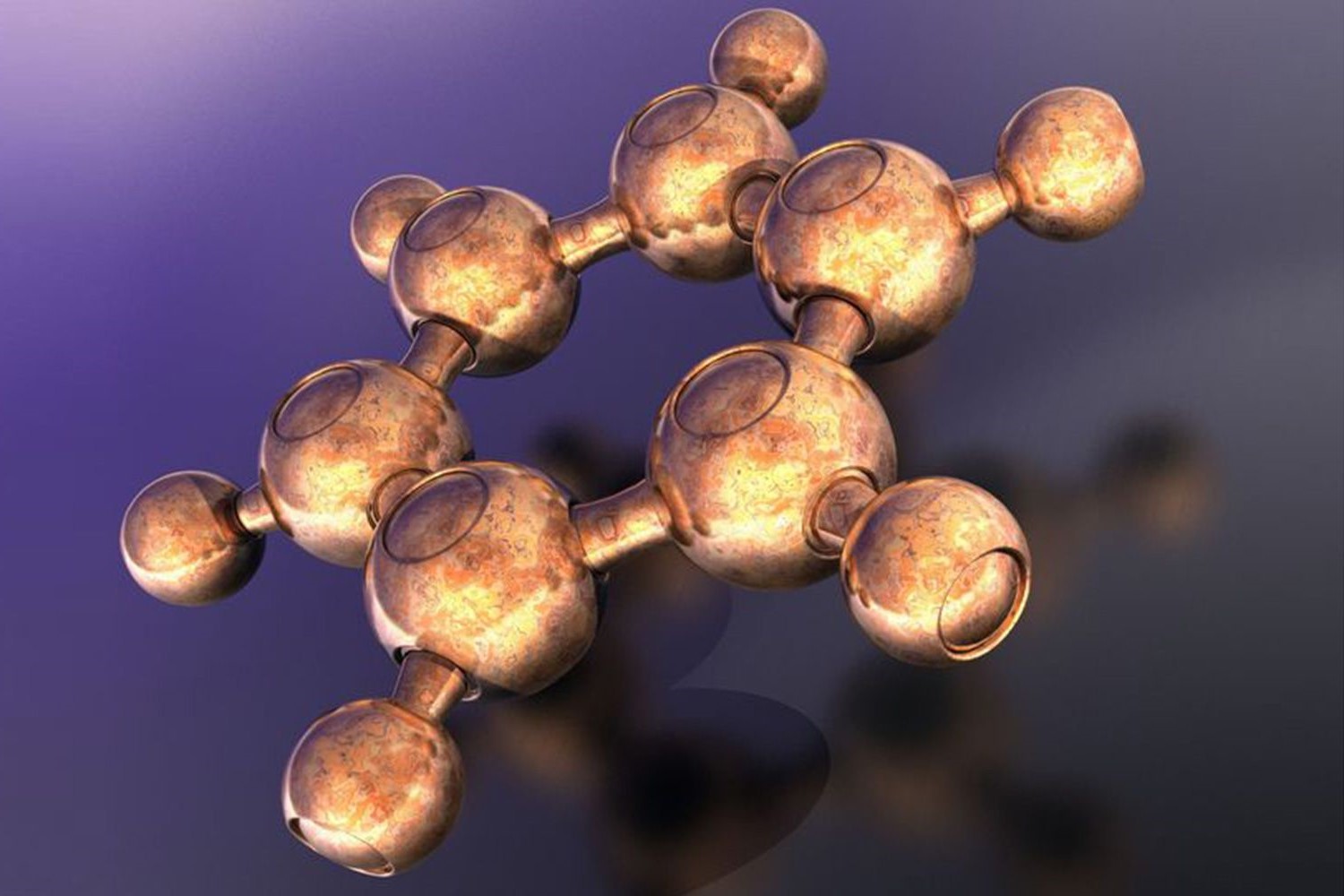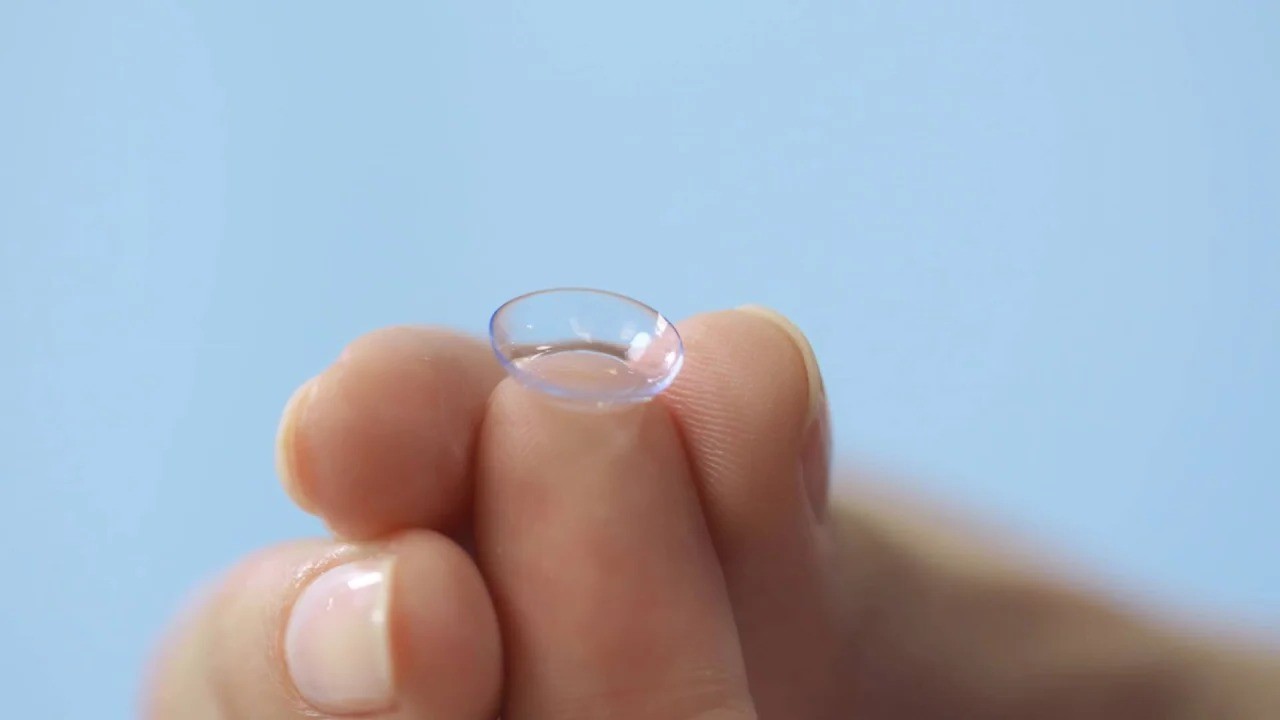

Science
How To Tell If A Molecule Is Polar
Published: February 25, 2024
Learn how to determine if a molecule is polar in this comprehensive guide to science. Understand the principles behind molecular polarity and its significance.
(Many of the links in this article redirect to a specific reviewed product. Your purchase of these products through affiliate links helps to generate commission for Noodls.com, at no extra cost. Learn more)
Table of Contents
Introduction
Understanding the concept of polarity in molecules is fundamental to comprehending various chemical and physical properties. The polarity of a molecule influences its behavior in a variety of contexts, including solubility, reactivity, and interactions with other substances. In the realm of chemistry, the concept of polarity refers to the distribution of electrical charge within a molecule. This distribution results in the presence of partial positive and partial negative charges, creating an uneven distribution of electrons.
The investigation of molecular polarity is crucial in fields such as organic chemistry, biochemistry, and material science. It provides valuable insights into the behavior of substances in diverse environments, shedding light on their interactions and potential applications. By delving into the intricacies of molecular polarity, scientists can unravel the underlying forces that govern chemical reactions and physical phenomena.
In this article, we will explore the concept of molecular polarity in depth, elucidating the factors that determine whether a molecule is polar or nonpolar. By examining the role of electronegativity and molecular symmetry, we will uncover the methods used to ascertain the polarity of a molecule. Additionally, we will delve into real-world examples of polar and nonpolar molecules, providing a comprehensive understanding of their structural characteristics and properties.
As we embark on this exploration of molecular polarity, we will unravel the intricate nature of chemical bonds and electron distribution, unveiling the captivating world of molecular interactions. Through this journey, we will gain a profound appreciation for the significance of polarity in shaping the behavior and characteristics of diverse substances. Join us as we unravel the mysteries of molecular polarity and its profound implications in the realm of chemistry and beyond.
Read more: How To Tell If A Relation Is A Function
What is a Polar Molecule?
A polar molecule is characterized by an uneven distribution of electrons, resulting in the presence of partial positive and partial negative charges within the molecule. This asymmetry in electron distribution arises from differences in electronegativity between the atoms forming the chemical bond. Electronegativity, a measure of an atom's ability to attract and hold onto electrons, plays a pivotal role in determining the polarity of a molecule.
In a polar covalent bond, the electrons are not shared equally between the atoms, leading to the accumulation of negative charge around the more electronegative atom and a corresponding positive charge around the less electronegative atom. This results in the formation of a dipole, where one end of the molecule possesses a partial positive charge while the other end carries a partial negative charge. As a result, polar molecules exhibit a separation of charge, giving rise to distinct regions of partial positive and partial negative charge within the molecule.
The concept of polarity is exemplified in water molecules, where the oxygen atom, with a higher electronegativity, attracts the shared electrons more strongly than the hydrogen atoms. Consequently, the oxygen end of the molecule acquires a partial negative charge, while the hydrogen ends possess a partial positive charge. This uneven distribution of charge gives rise to the unique properties of water, including its ability to form hydrogen bonds and its role as a universal solvent.
It is important to note that not all molecules are polar. In nonpolar molecules, the electronegativity difference between the atoms is negligible, resulting in an equal sharing of electrons and a symmetrical distribution of charge. As a result, nonpolar molecules do not exhibit distinct regions of partial positive and partial negative charge.
Understanding the concept of polarity is crucial in predicting the behavior of molecules in various chemical and biological processes. The presence or absence of polarity influences a molecule's interactions with other substances, its solubility in different solvents, and its overall reactivity. By delving into the intricacies of molecular polarity, scientists can unravel the underlying forces that govern chemical reactions and physical phenomena, paving the way for groundbreaking discoveries and technological advancements.
How to Determine if a Molecule is Polar
Determining the polarity of a molecule involves a comprehensive analysis of its structural and chemical characteristics. One of the primary methods used to ascertain the polarity of a molecule is by evaluating the electronegativity of its constituent atoms. Electronegativity, a measure of an atom's ability to attract and hold onto electrons, serves as a crucial indicator of the distribution of charge within a molecule.
When assessing the polarity of a molecule, it is essential to consider the electronegativity values of the atoms involved in the chemical bonds. If the atoms forming the bond have significantly different electronegativities, the bond is considered polar, leading to an uneven distribution of charge within the molecule. This results in the formation of a dipole, with distinct regions of partial positive and partial negative charge.
Furthermore, the molecular geometry and symmetry play a pivotal role in determining the overall polarity of a molecule. In cases where a molecule contains polar covalent bonds, the spatial arrangement of these bonds must be considered. If the polar bonds are symmetrically arranged, the individual bond dipoles may cancel each other out, resulting in a nonpolar molecule. Conversely, asymmetrical arrangements of polar bonds lead to a net dipole moment, indicating the overall polarity of the molecule.
Another approach to determine the polarity of a molecule involves analyzing its molecular shape and the distribution of its electron density. By employing techniques such as molecular modeling and spectroscopic methods, scientists can gain insights into the three-dimensional structure of the molecule and assess the presence of asymmetrical charge distribution.
Additionally, experimental methods, including measurements of dipole moments and infrared spectroscopy, provide valuable data for evaluating the polarity of a molecule. These techniques offer direct evidence of the presence of a net dipole moment within the molecule, confirming its polar nature.
In summary, the determination of a molecule's polarity involves a multifaceted analysis encompassing electronegativity values, molecular geometry, and experimental observations. By integrating these diverse approaches, scientists can unravel the intricate nature of molecular polarity, paving the way for a deeper understanding of chemical interactions and material properties.
Using Electronegativity to Determine Polarity
Electronegativity serves as a fundamental parameter in the assessment of molecular polarity. It is a measure of an atom's ability to attract and hold onto electrons within a chemical bond. When evaluating the polarity of a molecule, the electronegativity values of the atoms involved play a pivotal role in determining the distribution of charge within the molecule.
In a covalent bond, where atoms share electrons, the electronegativity difference between the bonded atoms dictates the degree of electron density shift. If the atoms have significantly different electronegativities, the bond is considered polar, leading to an uneven distribution of charge. This results in the formation of a dipole, with one end of the bond carrying a partial positive charge and the other end possessing a partial negative charge.
The electronegativity values of elements can be found on the periodic table, with fluorine being the most electronegative element. By comparing the electronegativity values of the atoms involved in a chemical bond, scientists can predict the polarity of the bond and, consequently, the overall polarity of the molecule.
For example, in a hydrogen chloride (HCl) molecule, chlorine, with a higher electronegativity, attracts the shared electrons more strongly than hydrogen, resulting in a polar covalent bond. As a result, the chlorine end of the molecule acquires a partial negative charge, while the hydrogen end possesses a partial positive charge, leading to the overall polarity of the HCl molecule.
The concept of electronegativity provides a quantitative means of assessing the polarity of molecules, offering valuable insights into their behavior and interactions. By leveraging electronegativity values, scientists can make informed predictions about the properties and reactivity of diverse substances, paving the way for advancements in fields such as organic chemistry, biochemistry, and material science.
In summary, the utilization of electronegativity as a tool to determine molecular polarity enables scientists to unravel the intricate nature of chemical bonds and electron distribution, shedding light on the profound implications of polarity in the realm of chemistry and beyond.
Symmetry and Polarity
The relationship between molecular symmetry and polarity plays a pivotal role in determining the overall polarity of a molecule. Symmetry, in the context of molecular geometry, refers to the spatial arrangement of atoms and the distribution of electron density within a molecule. The presence of symmetry elements, such as planes of symmetry, rotation axes, and inversion centers, influences the overall distribution of charge and the existence of a net dipole moment within the molecule.
In cases where a molecule contains polar covalent bonds, the spatial arrangement of these bonds must be considered when assessing its overall polarity. Symmetrical arrangements of polar bonds may result in the cancellation of individual bond dipoles, leading to a nonpolar molecule. This phenomenon, known as symmetry-induced cancellation, occurs when the polar bonds are arranged in such a way that the opposing dipoles offset each other, resulting in a net dipole moment of zero.
Conversely, asymmetrical arrangements of polar bonds lead to the absence of cancellation, resulting in a net dipole moment and indicating the overall polarity of the molecule. This asymmetry in the distribution of charge gives rise to distinct regions of partial positive and partial negative charge within the molecule, contributing to its polar nature.
The concept of symmetry and polarity is exemplified in molecules such as carbon dioxide (CO2) and water (H2O). In the case of carbon dioxide, despite the presence of polar carbon-oxygen bonds, the linear molecular geometry and symmetrical arrangement of the bonds result in the cancellation of the individual bond dipoles, rendering the molecule nonpolar. Conversely, the water molecule, with its bent molecular geometry and asymmetrical distribution of polar O-H bonds, exhibits a net dipole moment, indicating its polar nature.
Furthermore, the presence of symmetry elements in a molecule influences its physical and chemical properties, including its interactions with other substances and its behavior in diverse environments. By analyzing the interplay between molecular symmetry and polarity, scientists can gain valuable insights into the structural characteristics and reactivity of molecules, paving the way for advancements in fields such as spectroscopy, crystallography, and materials science.
In summary, the intricate relationship between molecular symmetry and polarity underscores the profound influence of spatial arrangement on the overall polarity of a molecule. By unraveling the interplay between symmetry elements and charge distribution, scientists can gain a deeper understanding of molecular interactions and material properties, opening new avenues for exploration and discovery in the realm of chemistry and beyond.
Read more: How To Tell If A Function Is Even Or Odd
Examples of Polar and Nonpolar Molecules
The distinction between polar and nonpolar molecules is exemplified by a diverse array of substances, each showcasing unique structural characteristics and properties arising from their polarity or lack thereof. These examples provide valuable insights into the profound implications of molecular polarity in shaping the behavior and interactions of substances in various contexts.
Polar Molecules
Water (H2O): One of the most iconic examples of a polar molecule, water exhibits a pronounced polarity due to the electronegativity difference between oxygen and hydrogen atoms. The bent molecular geometry of water, coupled with the asymmetrical distribution of the polar O-H bonds, results in a net dipole moment, giving rise to distinct regions of partial positive and partial negative charge. This polarity underpins water's remarkable properties, including its role as a universal solvent, its high surface tension, and its ability to form hydrogen bonds, which are crucial for various biological processes.
Ammonia (NH3): Ammonia represents another compelling example of a polar molecule. The asymmetrical arrangement of the polar N-H bonds, combined with the trigonal pyramidal molecular geometry, leads to the presence of a net dipole moment within the molecule. This polarity contributes to ammonia's unique characteristics, including its ability to form hydrogen bonds and its role as a crucial component in the synthesis of fertilizers and various chemical compounds.
Hydrogen Chloride (HCl): The polar nature of hydrogen chloride arises from the significant electronegativity difference between hydrogen and chlorine. This results in the formation of a polar covalent bond, leading to the presence of distinct regions of partial positive and partial negative charge within the molecule. The polarity of hydrogen chloride influences its behavior as a highly soluble gas and a crucial component in various industrial processes, including the production of PVC and other chemicals.
Nonpolar Molecules
Carbon Dioxide (CO2): Despite the presence of polar carbon-oxygen bonds, carbon dioxide is a classic example of a nonpolar molecule. The linear molecular geometry and symmetrical arrangement of the polar bonds result in the cancellation of individual bond dipoles, leading to a net dipole moment of zero. This nonpolarity contributes to carbon dioxide's behavior as a nonreactive gas and its role in various industrial applications, including carbonation in beverages and as a refrigerant.
Tetrafluoromethane (CF4): Tetrafluoromethane exemplifies a nonpolar molecule due to its symmetrical tetrahedral molecular geometry and the cancellation of individual bond dipoles. Despite the presence of polar carbon-fluorine bonds, the spatial arrangement of these bonds results in a net dipole moment of zero, rendering the molecule nonpolar. This nonpolarity influences tetrafluoromethane's behavior as a stable and nonreactive gas, finding applications in semiconductor manufacturing and plasma etching processes.
By exploring these examples of polar and nonpolar molecules, we gain a deeper understanding of the profound influence of molecular polarity on the behavior and characteristics of diverse substances. These examples underscore the pivotal role of polarity in shaping the interactions and applications of molecules in fields ranging from chemistry and biology to materials science and industrial processes.
Conclusion
In conclusion, the concept of molecular polarity serves as a cornerstone in understanding the behavior and interactions of diverse substances in the realm of chemistry and beyond. The determination of a molecule's polarity involves a multifaceted analysis encompassing electronegativity values, molecular geometry, and experimental observations. By integrating these diverse approaches, scientists can unravel the intricate nature of molecular polarity, paving the way for a deeper understanding of chemical interactions and material properties.
The interplay between electronegativity, molecular symmetry, and charge distribution underscores the profound influence of polarity on the behavior and characteristics of molecules. The presence or absence of polarity influences a molecule's interactions with other substances, its solubility in different solvents, and its overall reactivity. This insight is crucial in predicting the behavior of molecules in various chemical and biological processes, providing valuable guidance for researchers and professionals across numerous scientific disciplines.
Furthermore, the examples of polar and nonpolar molecules highlight the diverse array of substances that exhibit unique structural characteristics and properties arising from their polarity or lack thereof. From the iconic polar molecule water, with its crucial role as a universal solvent, to nonpolar substances like carbon dioxide, each example provides valuable insights into the profound implications of molecular polarity in shaping the behavior and interactions of substances in various contexts.
By unraveling the intricate nature of molecular polarity, scientists can pave the way for groundbreaking discoveries and technological advancements. The profound influence of polarity on chemical reactions, material properties, and biological processes underscores the significance of this concept in advancing scientific knowledge and driving innovation across a myriad of fields.
In essence, the exploration of molecular polarity unveils the captivating world of chemical bonds and electron distribution, shedding light on the underlying forces that govern chemical reactions and physical phenomena. Through this journey, we gain a profound appreciation for the significance of polarity in shaping the behavior and characteristics of diverse substances, paving the way for advancements in fields such as organic chemistry, biochemistry, and material science.














